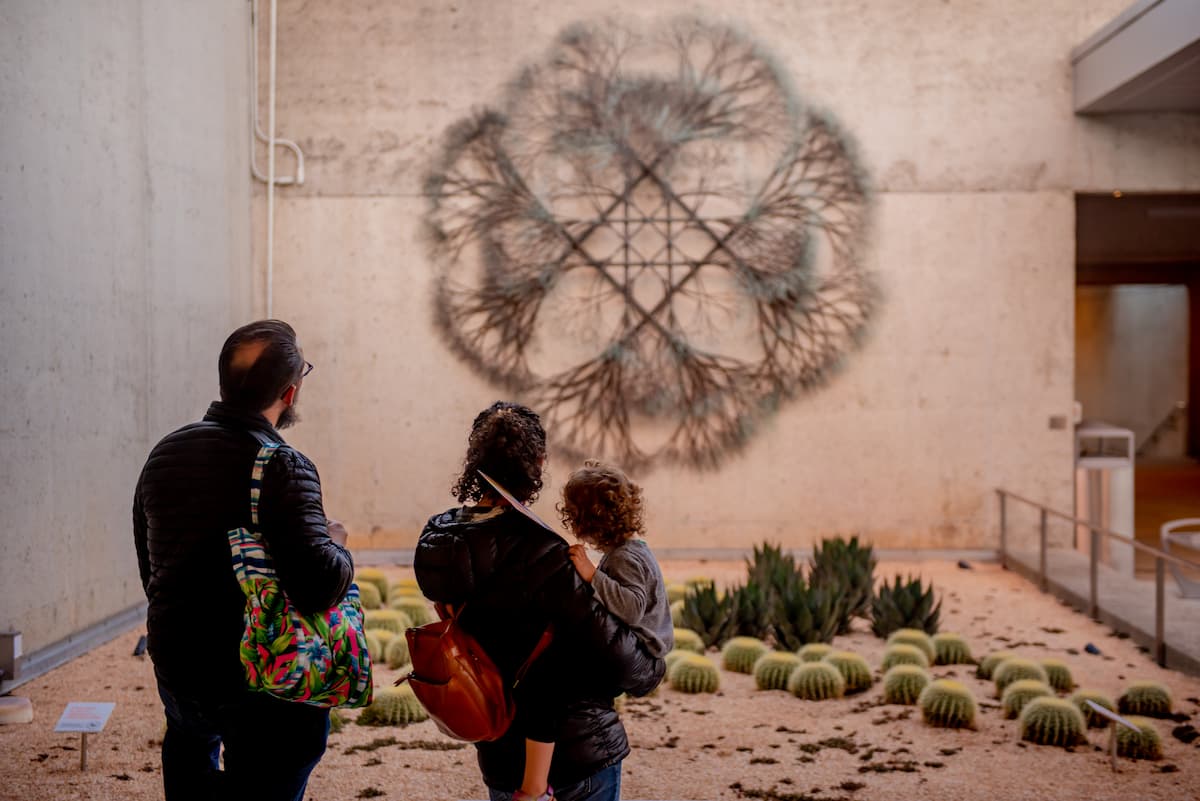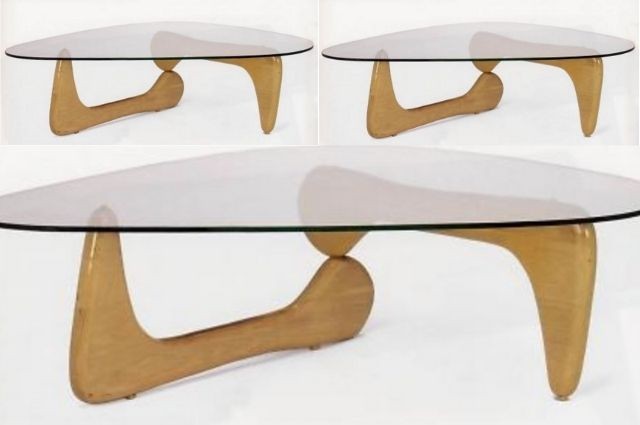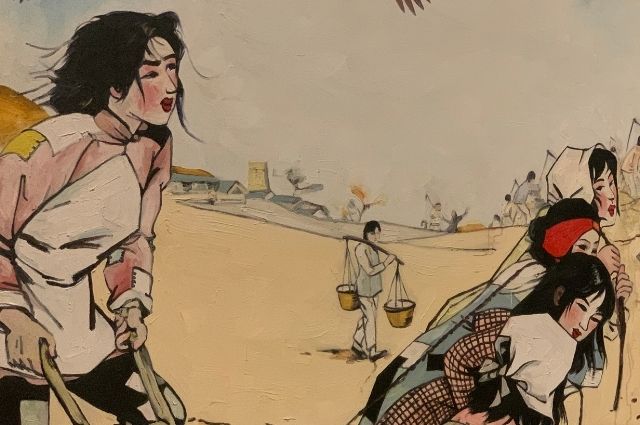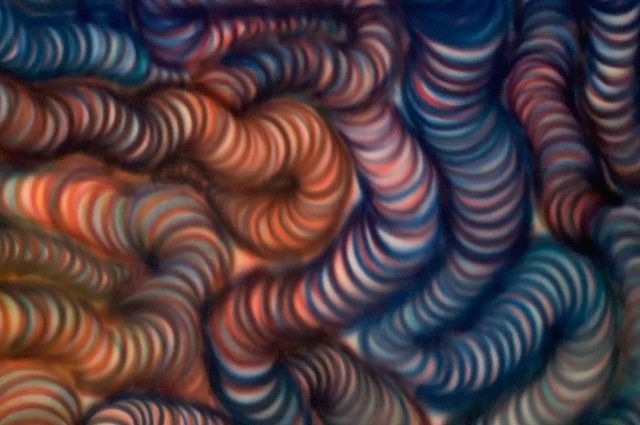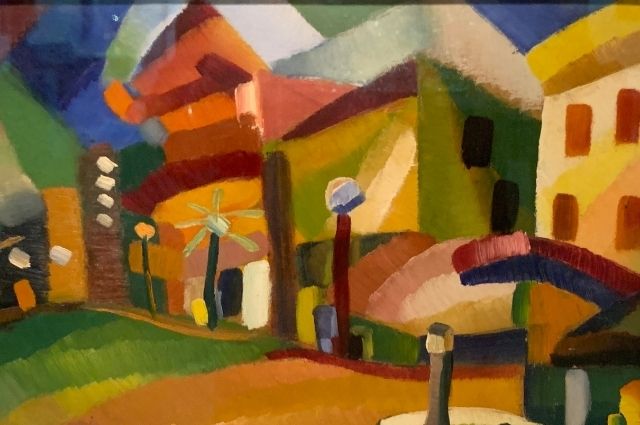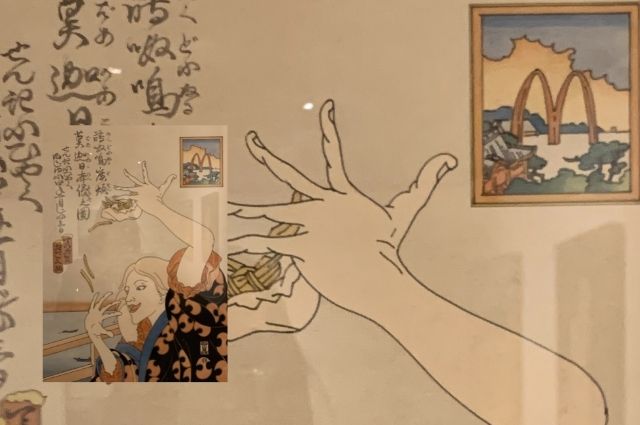Asian American and Pacific Islander artists with a California perspective on view at OMCA
Tour of OMCA’s Gallery of California Art to get inspired by some of the many Asian American and Pacific Islander (AAPI) artists’ works we have on view. These seven diverse artists all explore themes related to their heritage but bring a distinctly California point of view to their art.
Ruth Asawa, Untitled, 1974
Ruth Asawa, one of the most celebrated artists of the 20th century, explores space and form through nest-like pieces inspired by traditional basket-weaving techniques. In this untitled sculpture she used galvanized wire, stone, and bronze, to create the nest-like work piece. The hollow, transparent shape challenges the traditional idea of sculpture as a solid mass as light permeates through the looped wires and transforms the space surrounding the object. On view in OMCA’s Oak Street Plaza.
Isamu Noguchi, Coffee Table, early 1950s
Isamu Noguchi was an American artist and landscape architect whose artistic career spanned six decades, beginning in the 1920s. Known for his sculpture and public artworks, Noguchi also designed several mass-produced lamps and furniture pieces, some of which are still manufactured and sold. In 1947, Noguchi began a collaboration with the Herman Miller company, along with George Nelson, Paul László and Charles Eames to produce a catalog containing what is often considered to be the most influential bodies of modern furniture ever produced. The Noguchi table comprises a wooden base composed of two identical curved wood pieces, and a heavy plate glass top. Described as “sculpture-for-use” and “design for production,” the Noguchi table became one of Herman Miller’s most iconic and successful designs and an instant collectible. See the table in the crafts and decorative arts section of the Gallery of California Art.
Hung Liu, Heroine Gu Yanxiu, 2012
In her artwork, Hung Liu amplifies stories of those who have historically been invisible or unheard. This piece, Heroine Gu Yanxiu, features women rebuilding a war-torn country, depicts a scene of reconstruction of the Chinese countryside where over a dozen women labor over the land of hard rock scrabble. The artistic style was influenced by Chinese picture books she remembered from her childhood. See several of Hung Liu’s artworks including ‘Heroine Gu Yanxiu’ on view in the Gallery of California Art.
Leo Valledor, See You Around, 1982
Leo Valledor (1936–1989) was a Filipino-American painter who pioneered the hard-edge painting style who delved into the justapositions of color, form, and the interplay of objects in the natural world throughout his career. He was a leader of the minimalist movement in the 1970s. Leo Valledor was born and raised in the Fillmore district of San Francisco and is a cousin to artist Carlos Villa (featured below). Valledor was largely self-taught, quickly developing a gestural abstract style. View ‘See You Around’ in the Minimalism section in the Gallery of California Art.
Carlos Villa, Untitled, 1969
Carlos Villa, known for his teaching, activism, and dynamic work grew up in San Francisco’s Tenderloin neighborhood. He began as a Minimalist artist committed to exploring his own Filipino-American background, spotlighting forgotten or neglected art and artists of the post–World War II era.
He wanted to rebalance the canon by reviving artistic cultures that had been disrupted by colonization and war. Through teaching and curating, Villa influenced many young artists and is remembered for his activism as well as his contributions to Filipino-American art. Common in his style, layers of colored spirals draw a slow, winding contraction and expansion, giving an illusion of breathing depth as if the forms were being seen underwater. See Carlos Villa’s ‘Untitled’ in the first section of the Gallery of California Art.
Yun Gee, San Francisco Chinatown, 1927
Yun Gee (Gee Wing Yun), born in the province of Guangdong in China, grew-up with his father in San Francisco’s Chinatown. Later he discovered painting and founded the Chinese Revolutionary Artists’ Club, where he taught advanced painting techniques and theory promoting the idea of a universalist modern art that had an aesthetic appeal and espoused a social consciousness. Yun Gee’s San Francisco Chinatown, depicts tall building facades and pagoda street lamps with bright rays jutting in all directions. He portrays Chinatown as a brilliant spectacle, devoid of social relations and daily activity, its identity best understood as a carefully constructed place. Brushes and strokes fell into jigsaw-like patterns, and provide a level of visual interest in the play of colored facets and edges. View the front and the backside of Yun Gee’s artwork in the Gallery of California Art.
Masami Teraoka, McDonald’s Hamburgers Invading Japan/Flying Fries, 1974
Masami Teraoka began the series McDonald’s Hamburgers Invading Japan in 1974. Teraoka playfully mocks Japan’s embrace of America’s throw-away fast-food culture. Irony pervades this series of works that often incongruously depict women in traditional Japanese attire awkwardly handling French fries and burger wrappings. This artwork by Masami Teraoka is now on view in the Gallery of California Art
To see all of these artworks now on view at OMCA, visit the Gallery of California Art.
More
